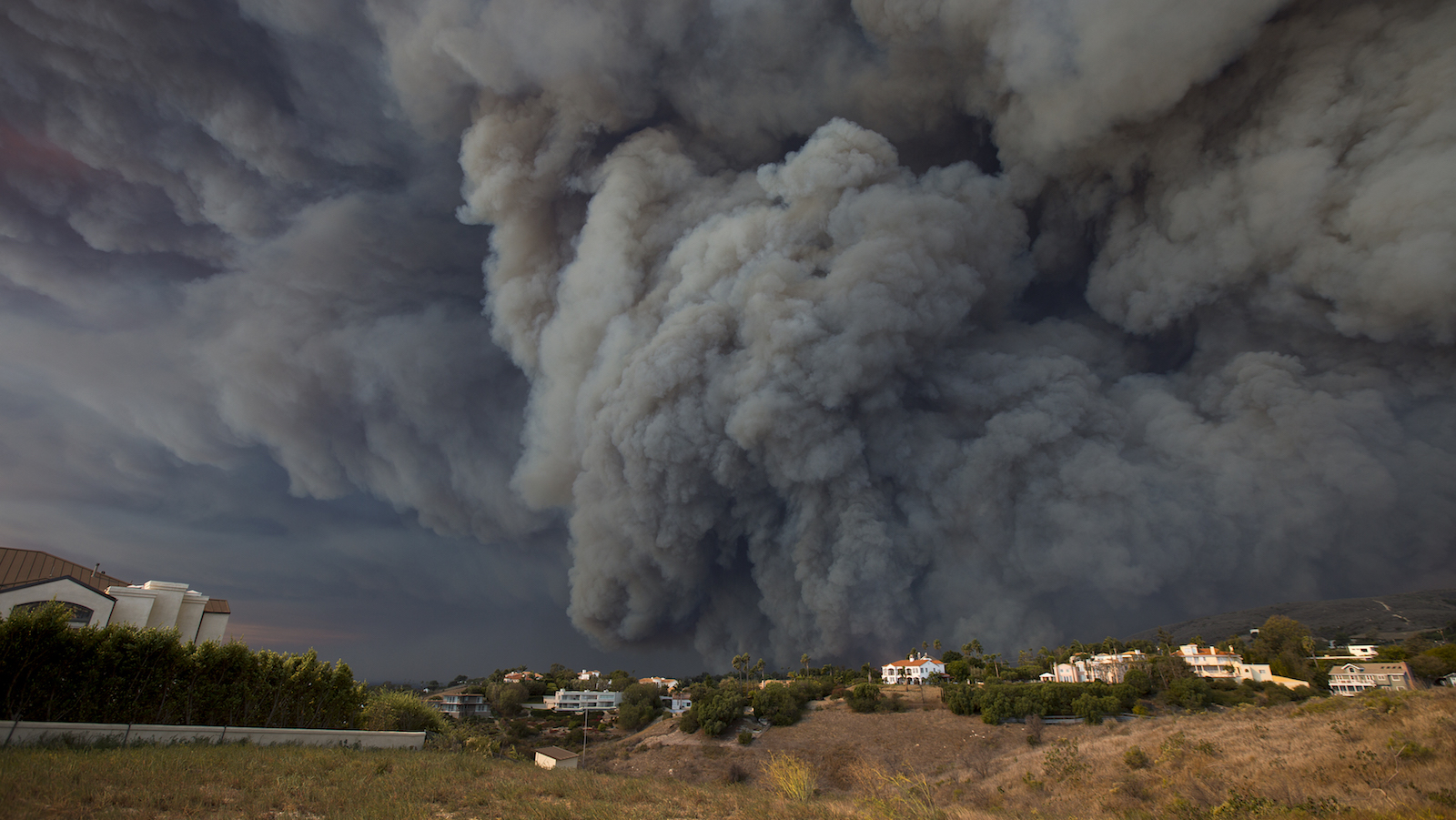Wildfires have blazed across the West this month, burning millions of acres in California, Colorado, and Montana. Where there’s fire, there’s smoke, and especially amid the COVID-19 pandemic, that’s not a good thing. Air quality hit dangerous levels in parts of California and Colorado this week, which means millions are breathing in pollutants from the wildfire smoke, with potentially dangerous impacts for public health.
Fine particulate matter, or PM 2.5, is the biggest culprit for bad air quality following a wildfire event. Fine particulates are tiny solid and liquid particles that are suspended in the air, and wildfires produce lots of them. “When you look at a smoke plume and see that dark cloud, that’s particulate matter,” Colleen Reid, an assistant professor of geography at the University of Colorado, Boulder, told Grist. Particles smaller than 2.5 microns are particularly concerning, she said, because “the smaller the particle, the deeper it can get into the lungs.”
Earlier this week, the concentration of PM 2.5 in some parts of the Bay Area exceeded Environmental Protection limits by a factor of five, giving them the worst air quality in the world. “It’s worse in the Bay Area now than mega cities like New Delhi, which are known for poor air quality,” Coty Jen, assistant professor at Carnegie Mellon University, told USA Today on Monday.
Exposure to PM 2.5 from wildfire smoke can cause a range of acute symptoms including sore throat, itching eyes, cough, and shortness of breath. It can also produce inflammation in the lungs, exacerbating respiratory conditions like asthma and lung disease. There’s also some evidence that exposure to wildfire smoke is associated with an increase in heart attacks and low birth weight if a parent is exposed during pregnancy.
Obviously, none of this is great in the middle of a pandemic that threatens the respiratory system; exposure to PM 2.5 has been shown to make COVID-19 more deadly. On top of that, mixed public health messaging between the pandemic, the fires, and the heatwave that hit California last week are leaving people caught between a rock and a hard place. With the pandemic, people have been told they are safer at home, but with the wildfires, people have to be prepared to evacuate. There’s a similar conflict between responses to heat and wildfires, said Reid: “When it’s really hot, you want to open your windows to cool off your home, but during a fire, you want to close your windows to not let in air pollution.” Even the masks that protect against COVID-19 and wildfire smoke are incompatible; N95s with valves protect against wildfire smoke, but can still spread COVID-19 to others, while cloth masks prevent the spread of COVID-19 but don’t protect against smoke.
The end result? The wildfires, the heat, and the pandemic are combining to make a particularly challenging public health stew. “What’s happening right now with the high temperatures, the air pollution exposures, and the coronavirus is just really challenging in terms of thinking about all the ways that people are impacted,” said Reid.



